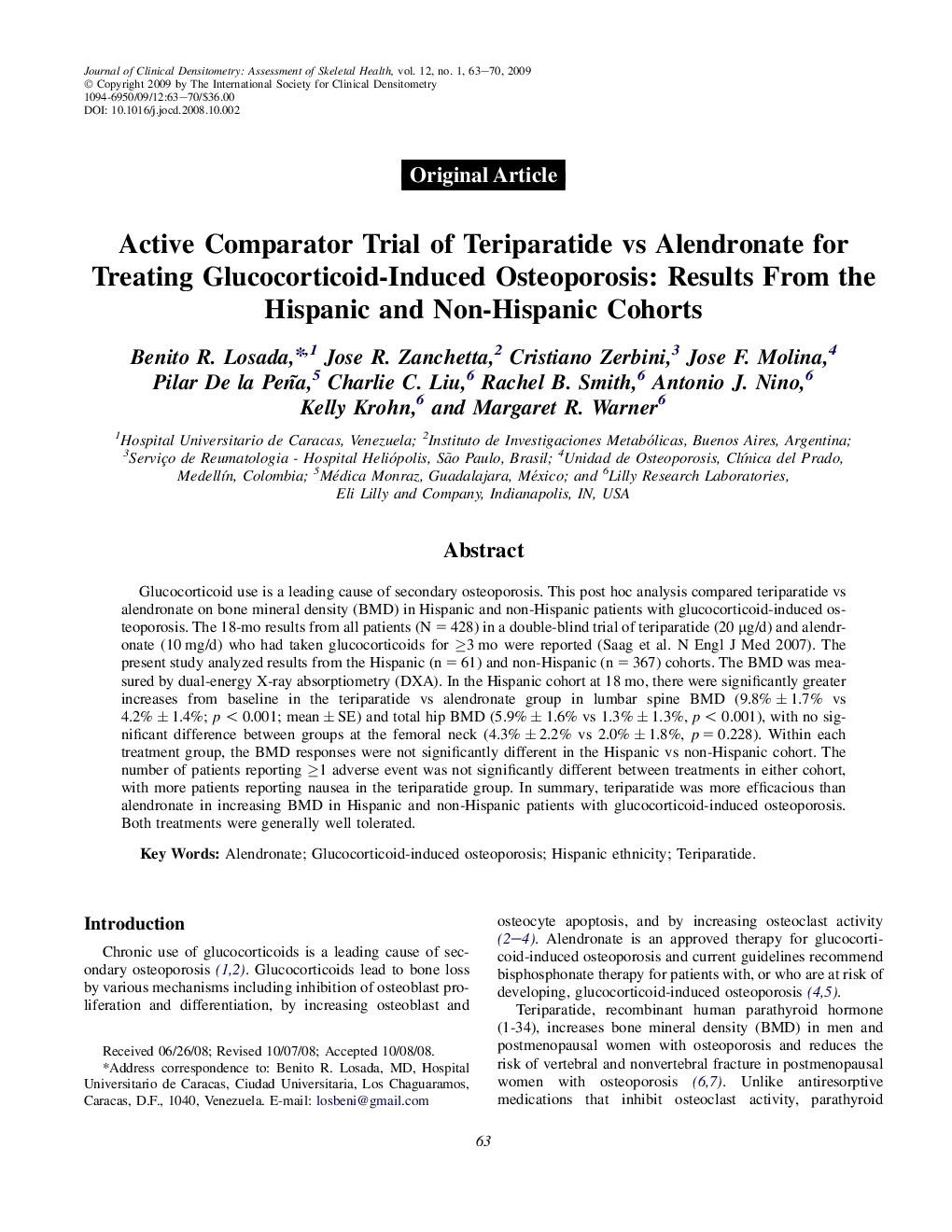| Article ID | Journal | Published Year | Pages | File Type |
|---|---|---|---|---|
| 3271168 | Journal of Clinical Densitometry | 2009 | 8 Pages |
Abstract
Glucocorticoid use is a leading cause of secondary osteoporosis. This post hoc analysis compared teriparatide vs alendronate on bone mineral density (BMD) in Hispanic and non-Hispanic patients with glucocorticoid-induced osteoporosis. The 18-mo results from all patients (N = 428) in a double-blind trial of teriparatide (20 μg/d) and alendronate (10 mg/d) who had taken glucocorticoids for â¥3 mo were reported (Saag et al. N Engl J Med 2007). The present study analyzed results from the Hispanic (n = 61) and non-Hispanic (n = 367) cohorts. The BMD was measured by dual-energy X-ray absorptiometry (DXA). In the Hispanic cohort at 18 mo, there were significantly greater increases from baseline in the teriparatide vs alendronate group in lumbar spine BMD (9.8% ± 1.7% vs 4.2% ± 1.4%; p < 0.001; mean ± SE) and total hip BMD (5.9% ± 1.6% vs 1.3% ± 1.3%, p < 0.001), with no significant difference between groups at the femoral neck (4.3% ± 2.2% vs 2.0% ± 1.8%, p = 0.228). Within each treatment group, the BMD responses were not significantly different in the Hispanic vs non-Hispanic cohort. The number of patients reporting â¥1 adverse event was not significantly different between treatments in either cohort, with more patients reporting nausea in the teriparatide group. In summary, teriparatide was more efficacious than alendronate in increasing BMD in Hispanic and non-Hispanic patients with glucocorticoid-induced osteoporosis. Both treatments were generally well tolerated.
Related Topics
Health Sciences
Medicine and Dentistry
Endocrinology, Diabetes and Metabolism
Authors
Benito R. Losada, Jose R. Zanchetta, Cristiano Zerbini, Jose F. Molina, Pilar De la Peña, Charlie C. Liu, Rachel B. Smith, Antonio J. Nino, Kelly Krohn, Margaret R. Warner,
